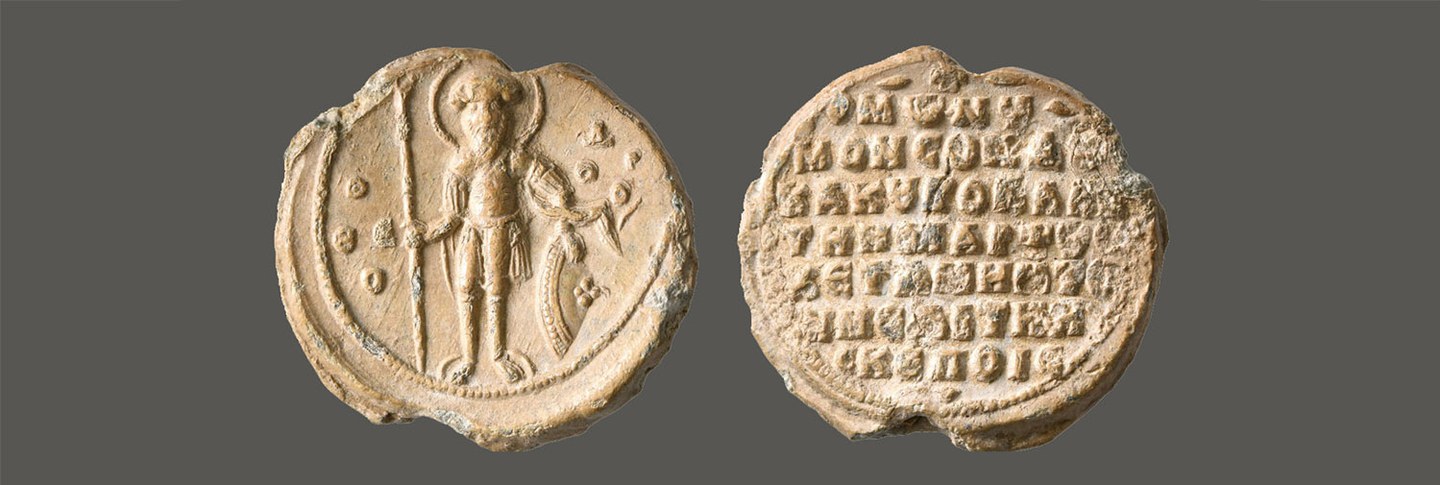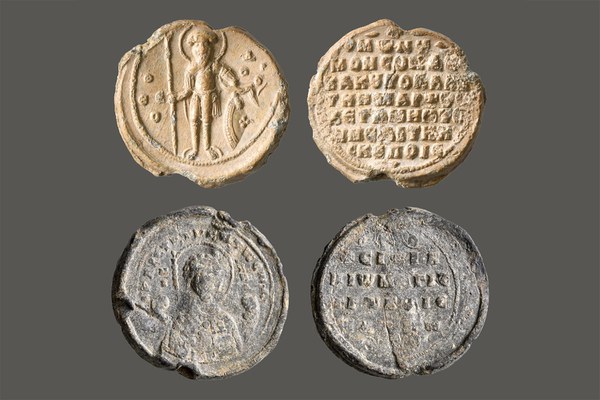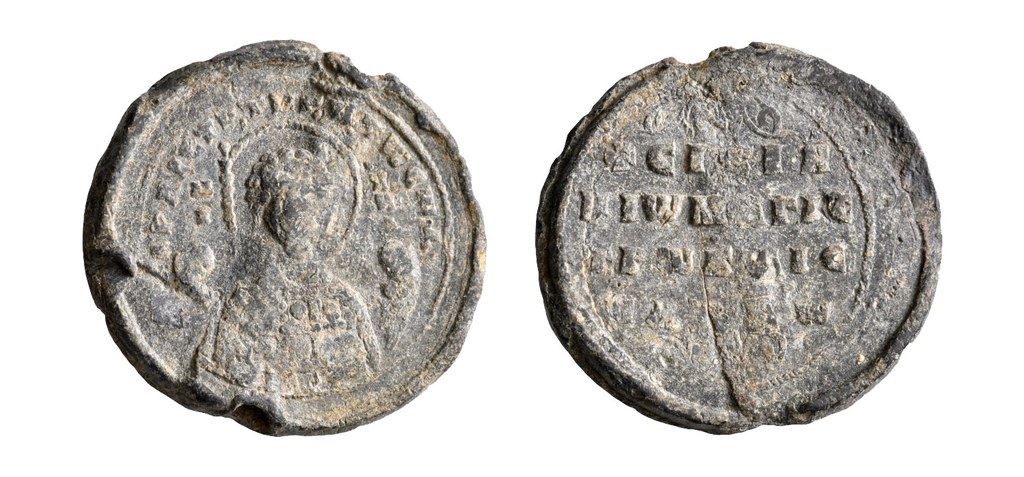By Jonathan Shea
Lead seals provide some of the best evidence for the administrative history of the Byzantine Empire. Two recent acquisitions join those already in the collection and are precious sources for discerning the careers of imperial officeholders.
The first of these acquisitions is a seal of Theodore Chetames (Thoros, son of Hetoum) with a standing Saint Theodore in military attire holding a spear and shield on the obverse and an inscription written in twelve-syllable metrical verse on the reverse. The text reads, “martyr, protect your namesake Chetames, kouropalates and doux of Melitene.” Thoros was an Armenian, likely serving in the Byzantine army in the late 1060s and early 1070s under the emperor Romanos IV Diogenes.
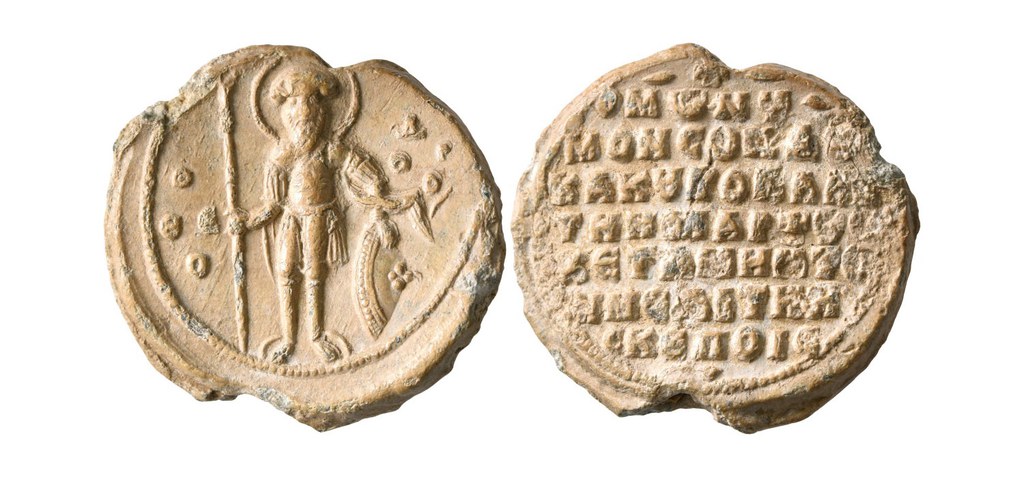
As outlined in a recent public lecture given by Eric McGeer, imperial control of the eastern frontier collapsed following the defeat and capture of Romanos IV by the Seljuk sultan Alp Arslan at the Battle of Mantzikert in 1071. The chaos at the heart of Byzantium left many units of the Byzantine army isolated. Along the old southern border these soldiers continued to fight under the command of the Armenian officer Philaretos Brachamios, who effectively became an independent warlord living between the remnants of the Byzantine Empire and the Seljuk sultanate (see BZS.1955.1.3396). It was Brachamios, rather than the emperor in Constantinople, who appointed Thoros doux (military commander) of Melitene, as recorded on his seal. Thoros also kept the important Byzantine court title of kouropalates. Both his title and his office demonstrate that Thoros, exercising his authority in a contested frontier, continued to see his world in terms of the Byzantine state hierarchy.
Thoros did not remain in Melitene. As a seal acquired by Dumbarton Oaks in 2019 testifies, he was in Edessa by the 1090s. He still had the kouropalates title, but this seal records that he had also acquired the Seljuk title emir. Thoros was straddling two worlds, ruling a recently Byzantine population now firmly in the Seljuk sphere. He remained ruler of Edessa until he was murdered in 1098, likely on the orders of the crusader Baldwin of Boulogne.
The second new acquisition features a bust of the Archangel Michael surrounded by a circular inscription. The seal asks Michael as commander of the heavenly host to protect its owner, identified on the reverse as Sisinnios magistros and eparch. As a magistros, Sisinnios held the highest title available to men outside the imperial family. Perhaps even more impressive, the eparch was the governor of Constantinople—second only to the emperor—who oversaw justice, policing, the operation of the guilds and marketplaces, and the provisioning of the city. Sisinnios’s relatively uncommon name, high rank, and the unusual invocation on his seal to the Archangel Michael allow us to conclude he was also the owner of two other seals in the Dumbarton Oaks collection, BZS.1955.1.4924 and BZS.1958.106.3587.
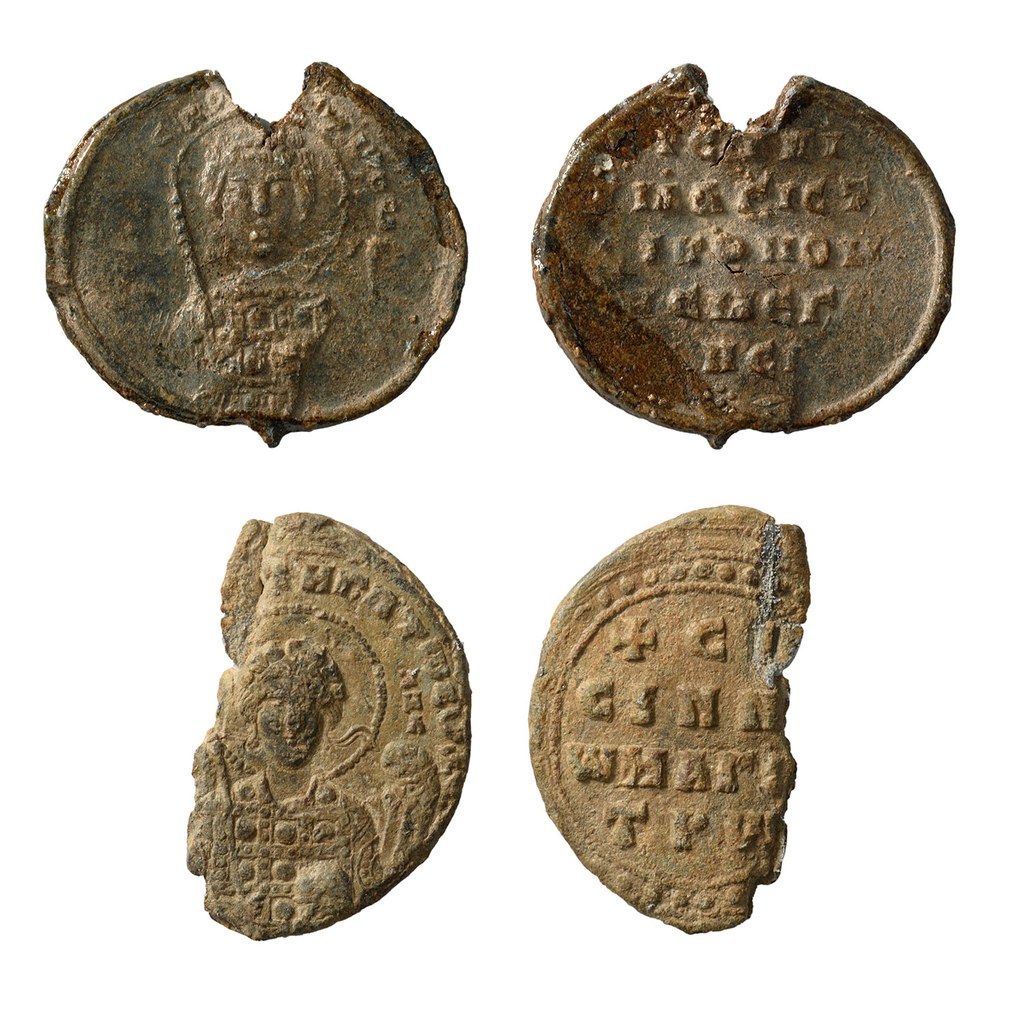
All three have the same obverse with a bust of Saint Michael, but each has a different inscription on the reverse. The first of these seals presents a different stage in Sisinnios’s career, when, as magistros and oikonomos of the Great Church, he was responsible for managing the finances of the cathedral of Hagia Sophia in Constantinople. The second seal does not mention an office at all but does record the title of magistros again. It is possible this seal was a contemporary of the other two, perhaps used by Sisinnios for personal correspondence, or it may come from a later period when he held no office.
Discover more Byzantine lives, high and low, in our online catalogue.
Jonathan Shea is associate curator of coins and seals.
